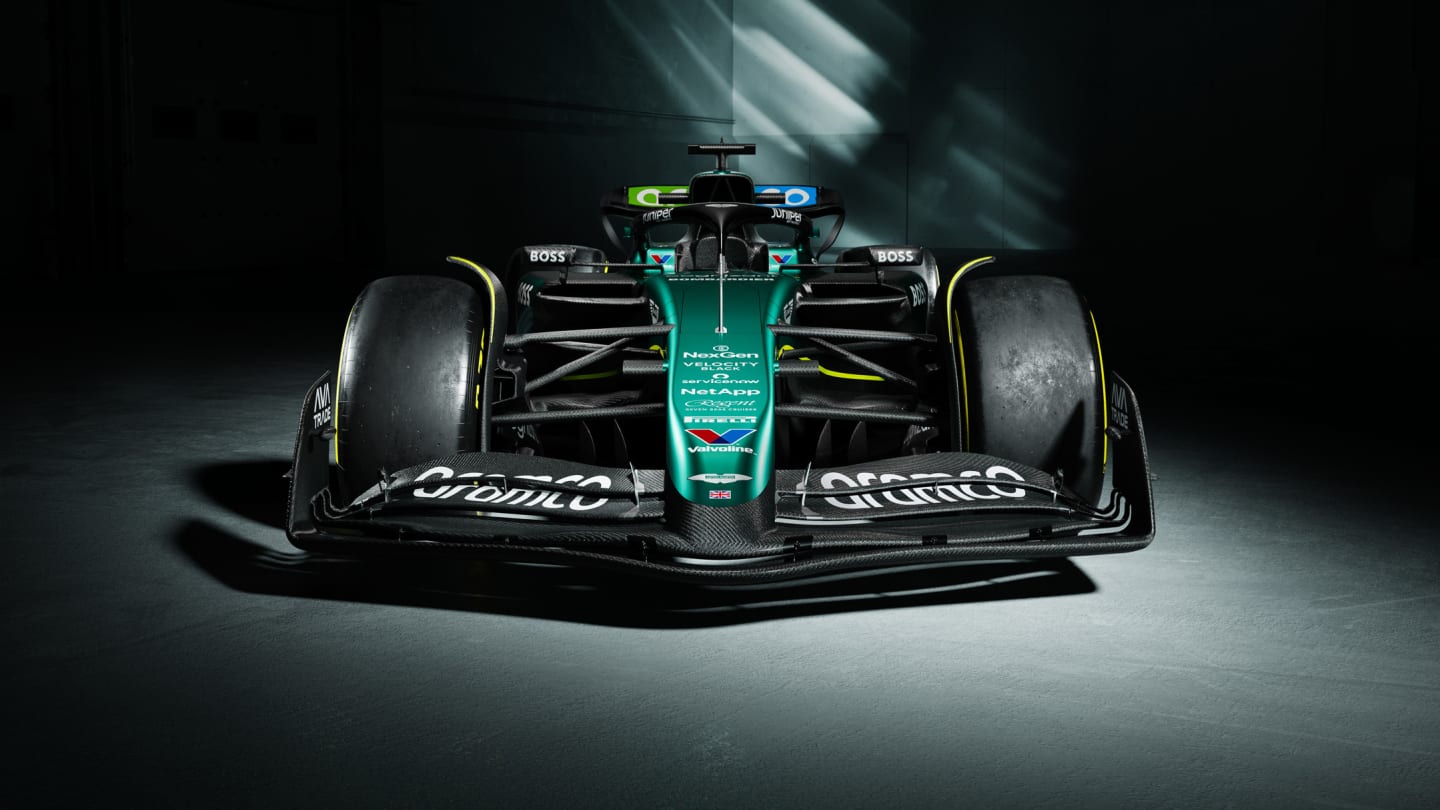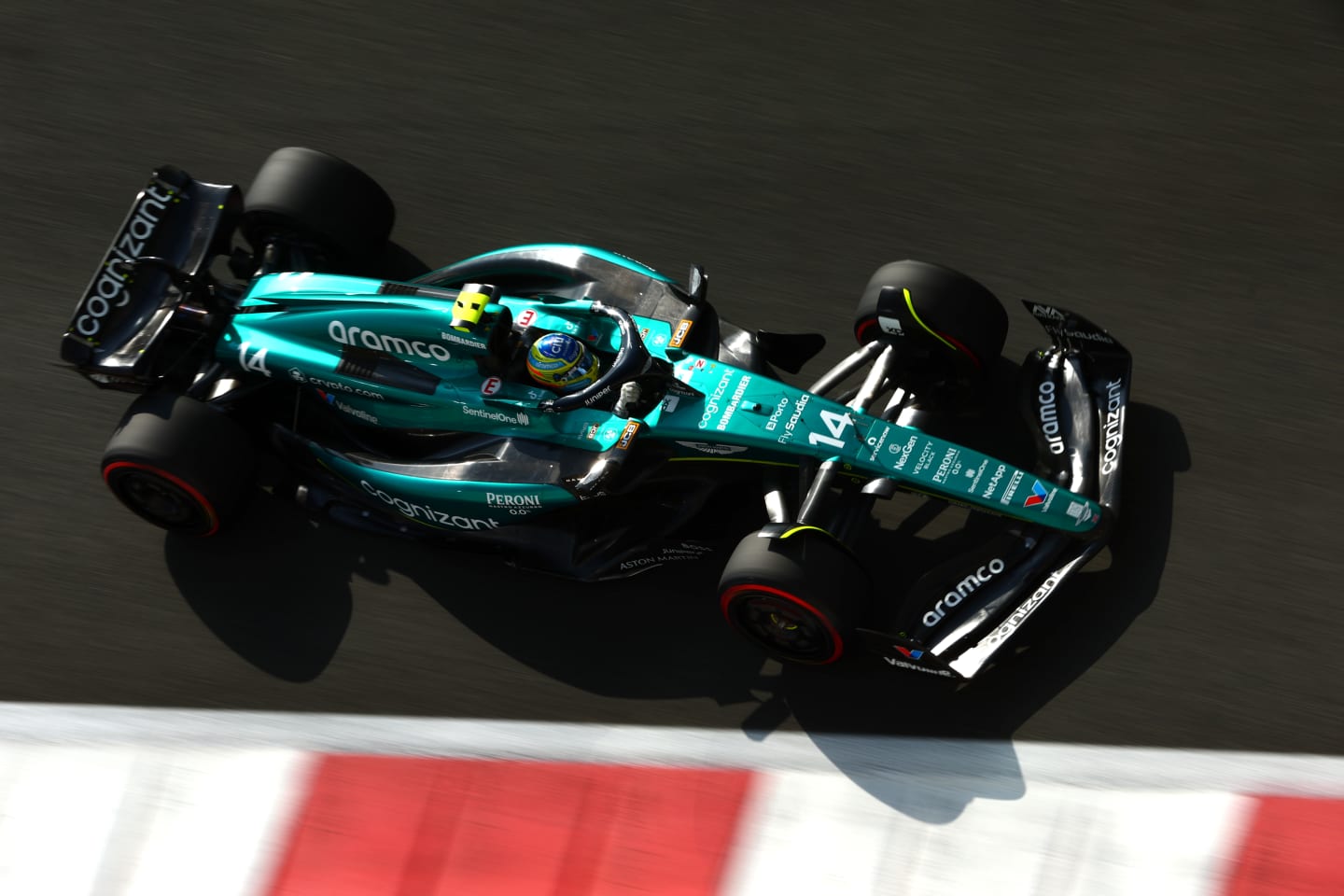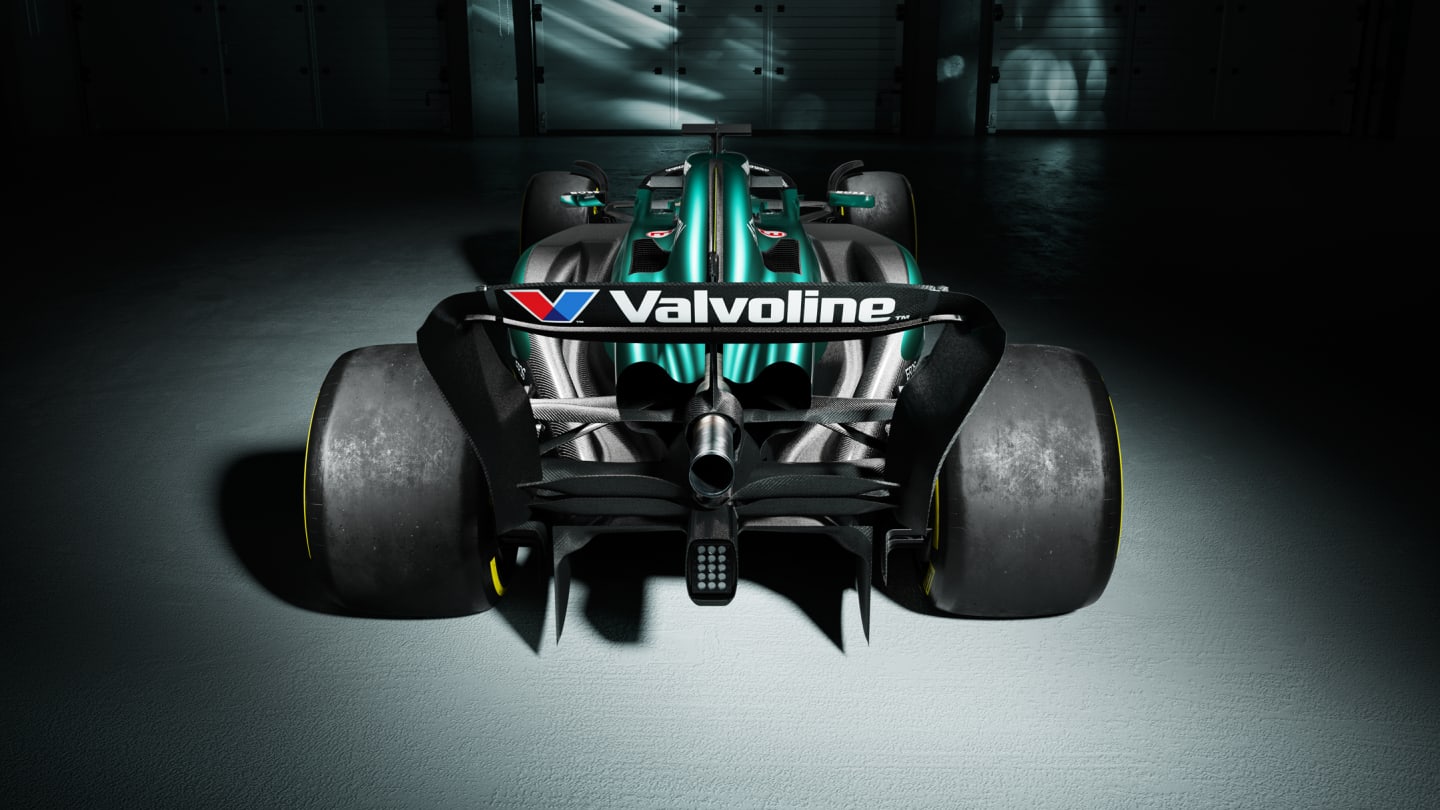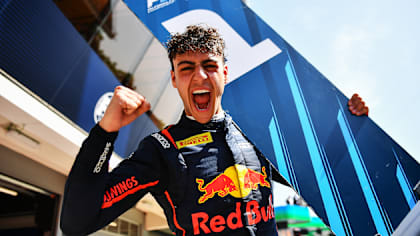)
Technical
TECH ANALYSIS: The stand-out visible changes on Aston Martin’s 2024 challenger

Share
)
Aston Martin’s AMR24 is a very elegant-looking evolution of last year’s car, with three key stand-out visible changes – the nose, radiator inlet/sidepods and rear suspension – but probably with a heavily reworked underfloor.
As technical director Dan Fallows put it: “There’s also quite a lot of stuff under the hood which hopefully you won’t see.”
Squeezing everything possible from that underfloor is what it is all about with this generation of car and the visible changes we see are all to further facilitate working that floor harder through all the combinations of speed, pitch, dive and roll it will encounter.
GALLERY: Every angle of Aston Martin’s new challenger, the AMR24
The Nose
The tip of the nose is now joined to the bottom flap (as on the Red Bull of the last two years) rather than the main plane below it. The small gap between the main plane and nose creates a less obstructed airflow feed to the underfloor. But making the nose shorter in this way will paradoxically have increased the weight because it must pass the same crash test. Having the same resistance to deforming within a shorter structure will require it to be more dense.

Aston Martin have adjusted the air intake at the front of their nose for 2024
Radiator inlet/sidepod
Aston Martin has taken the Red Bull concept of the extended lip beneath the radiator inlet and enhanced it greatly. The original idea of this feature was to give the airflow a more progressive entry to the radiator inlet, reducing the spillage which results when the inlet is overwhelmed by the volume of air at high speed. In this way there is less interference from this low-energy buffeted air to the floor edges below, which play a crucial part in enhancing the performance of the underfloor.
However, the exaggerated dimensions of this component on the AMR24 in combination with the placement above of the extended mirror mount suggest it is also fulfilling the function of a ‘mid-wing’, directing airflow to the top surface of the heavily-ramped sidepods, helping to energise it as it makes its way down there to the gap between the rear wheels and diffuser.
TECH ANALYSIS: What's new on RB's 2024 challenger – and what could change when it appears in testing
Where this flow merges with that of the floor edges, as both converge into that gap, is a super-powerful part of working the underfloor. Every bodywork component is in service to maximising the efficiency of this combined airflow, as the faster it flows the more downforce is created.

Aston Martin have adjusted the shaping of their sidepods, which were heavily influenced by the RB19 last season
Last year’s Austin upgrade included a mildly-reshaped sidepod – and we see this again on the AMR24. Notably, it has a bulge on the underside towards the front which narrows the channel beneath. This is similar to the feature also seen on the new Kick Sauber where it is claimed to energise the airflow further.
The ‘waterslide’ channel on the sidepod’s upper surface – which is there to direct the airflow spillage in the least disruptive way possible – has been narrowed and deepened.
TECH ANALYSIS: How Kick Sauber's C44 moves closer than ever towards a Red Bull design philosophy
Rear suspension
Aston takes its gearbox and rear suspension from Mercedes and we can see that Mercedes has switched from pull-rod to push-rod operation of the internal suspension rockers (the front remains push-rod). This moves the bulkiest part of the suspension internals up, creating more space to better shape the diffusers and thereby boost underfloor performance.
There is also a suggestion that the gearbox casing has been shortened slightly to give a more rearwards cockpit siting.

The rear suspension on the Aston Martin is now pushrod thanks to Mercedes' design conception
If the underfloor performance has been sufficiently enhanced, the hope is that the car will be less reliant on the upper wings for downforce and will therefore have a more competitive straight line performance than last year’s car.
“We’re very pleased with the step we’ve made over the winter,” summarises Fallows. “We think we have made a step on last year’s car which is what we wanted. But in truth it’s a short off-season and we were developing things that were relevant for this year quite late on into last season. The main aim for us is to make sure this car is a good platform to put those developments on during the season.”
YOU MIGHT ALSO LIKE
News Piastri ‘proud’ to bounce back with victory in Spain as he hails ‘weekend I’ve been looking for’
Report F2: Lindblad dominates in Barcelona to claim Feature Race victory for Campos Racing
NewsF1 Unlocked WIN OFFICIAL F1® THE MOVIE PRIZES WITH F1 UNLOCKED
Live Blog AS IT HAPPENED: Piastri wins Spanish GP ahead of Norris as Verstappen and Russell make contact late on




